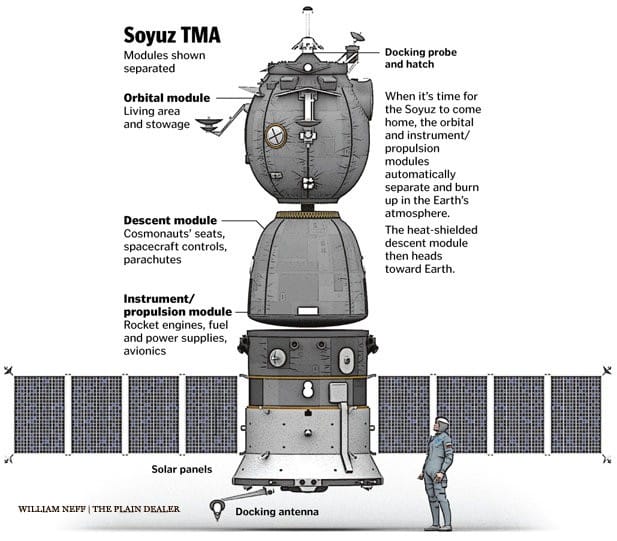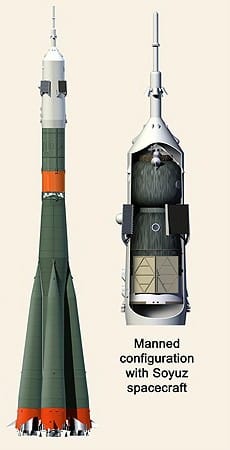Today, there are only two vehicles that can carry humans into space. One is the Russian Soyuz, the other is the Chinese Shenzhou (see below).
Only Chinese professional astronauts (or taikonauts) are allowed to fly on the Shenzhou, but the Russian Soyuz has flown private and professional astronauts from all over the world.
The Soyuz currently flies four times per year to the International Space Station, each time carrying three astronauts. It has an exceptional track record for reliability, having flown over 120 times consecutively without loss of life (last was Soyuz 11 in 1971). So while it may not be the most attractive or “bad ass” looking spacecraft when compared to the newly designed Boeing CST-100 Starliner or SpaceX Dragon V2 spacecraft (see below), it has a track record of safety that will be tough to match in the coming decades.
The Soyuz has also been continually upgraded since the day it went into service. The most recent round of upgrades went into effect in July 2016, with the launch of Soyuz-MS-01 which featured upgrades to reduce the mass of the docking system, a smaller on-board computer and upgraded solar panels. And have launched successfully eight times since the upgrade, the most recent flight being Soyuz-MS-08 on March 21, 2018. So while it maintains largely the same look from outside as the first day it flew, the spacecraft is definitely state of the art.
The Soyuz consists of three parts (as shown in the picture below):
- The Orbital module at the top – which provides living space for the crew while in orbit (for example during approach to the ISS).
- The Descent module in the middle – which is where the crew sit during launch and re-entry, and is the only part of the spacecraft to return to Earth.
- The Instrument module at the bottom – which is home to fuel-tanks, maneuvering engines, solar panels and other instruments.
The Soyuz can accommodate up to three crew members, and has enough life support for 30 person days (or 10 days for a crew of three).
During launch the spacecraft, with its solar panels folded in, is housed inside the faring in the top of a Soyuz rocket. See image below:
The Soyuz may be based on cold war technology, but its continual program of updates have helped it see off far more complex, expensive craft such as the space shuttle. Its success led to its basic form being copied by the Chinese Shenzhou, and all manned orbital class spacecraft now in development are capsules rather than winged vehicles. While its long term future may be in doubt as the Russian authorities contemplate a replacement, the Soyuz is sure to be around for a while yet.






